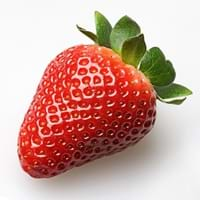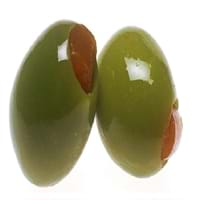Health Benefits
Anti depressant, Asthma treatment, Cancer prevention, Heart care, Improves stomach health, Increases metabolic rate, Prevents constipation
Cancer prevention, Helps in cartilage regeneration, Prevents macular degeneration, Treatment of alzheimer's disease
General Benefits
Anti-inflammatory properties, Boosts immune system, Controls blood pressure, Eye care, Maintains healthy cholesterol level, Strengthens bones
Anti oxidant properties, Anti-inflammatory properties, Boosts immune system, Controls blood pressure, Digestive aid, Maintains healthy cholesterol level
Skin Benefits
Anti-aging benefits, Brightens and lightens complexion, Skin cleansing, Treatment of acne, Treatment of skin diseases
Hydrates skin, Skin rejuvenation, Treatment of skin diseases
Hair Benefits
Promotes longer and healthier hair, Shiny hair, Treatment of dandruff
Acts as moisturizer, Good conditioner, Regulates hair growth
Allergy Symptoms
Chest pains, Eczema, Hives inside the cheeks, Itching, Skin rash, Swelling, Watery eyes
NA
Side Effects
Allergic reaction
Affects blood glucose levels, Dizziness, Stomach pain
Best Time to Eat
As a snack in the late afternoon, Don't consume at night and before bed, Don't eat after meal, Morning time (before lunch), Strictly avoid empty stomach
Hardly eaten raw, Olive oil is consumed for many purposes.
Vitamin B5 (Pantothenic Acid)
Vitamin C (Ascorbic Acid)
Vitamin K (Phyllochinone)
Phytosterol
Not Available
Calories in Fresh Fruit with Peel
Calories in Fresh Fruit without Peel
Not Available
Not Available
Calories in Frozen Form
Not Available
Calories in Juice
Not Available
Calories in Jam
Not Available
Calories in Pie
Not Available
Season
Spring, Summer
Spring, Summer
Varieties
Allstar, Annapolis, Cavendish, Chandler, Earliglow, Flavorfest, Honeoye, Jewel, Northeaster, San Andreas, Seascape, Tribute and Tristar
Manzanillo, Sevillano, Mission, Ascolano, Barouni, Gordal, Rubra and Picholine
Color
Bright red
Black, Green, Purple, Yellow
Origin
Europe
Eastern Mediterranean Region
Soil Type
Loam
Well-drained
Climatic Conditions
Cold
Warm to hot climate
Facts about
- Strawberry is the only fruit with seeds on its covering.
- Belgium has a museum dedicated to strawberries.
- Americans eat almost 3.4 pounds of fresh strawberries each year.
- They are believed to be an aphrodisiac.
- In ancient Greece, 1st eye shadow was made by adding olive oil in ground charcoal.
- The most expensive form of olive oil is Extra Virgin.
- Largest type of olive tree is known as donkey tree & smallest one is called bullet.
Top Producer
United States of America
Spain
Other Countries
Egypt, Mexico, Russia, Spain, Turkey
Algeria, Egypt, Greece, Italy, Morocco, Portugal, Syria, Tunisia, Turkey
Top Importer
Canada
United States of America
Top Exporter
United States of America
Italy
Botanical Name
Fragaria Ananassa
Olea europaea
Synonym
Not Available
Not Available
Subkingdom
Tracheobionta
Tracheobionta
Division
Magnoliophyta
Magnoliophyta
Class
Magnoliopsida
Magnoliopsida
Species
F. ananassa
O. europaea
Difference Between Strawberry and Olive
We might think that Strawberry and Olive are similar with respect to nutritional value and health benefits. But the nutrient content of both fruits is different. Strawberry and Olive Facts such as their taste, shape, color, and size are also distinct. The difference between Strawberry and Olive is explained here.
The amount of calories in 100 gm of fresh Strawberry and Olive with peel is 33.00 kcal and 115.00 kcal and the amount of calories without peel is Not Available and Not Available respectively. Thus, Strawberry and Olive belong to Low Calorie Fruits and High Calorie Fruits category.These fruits might or might not differ with respect to their scientific classification. The order of Strawberry and Olive is Rosales and Lamiales respectively. Strawberry belongs to Rosaceae family and Olive belongs to Oleaceae family. Strawberry belongs to Fragaria genus of F. ananassa species and Olive belongs to Olea genus of O. europaea species. Beings plants, both fruits belong to Plantae Kingdom.









